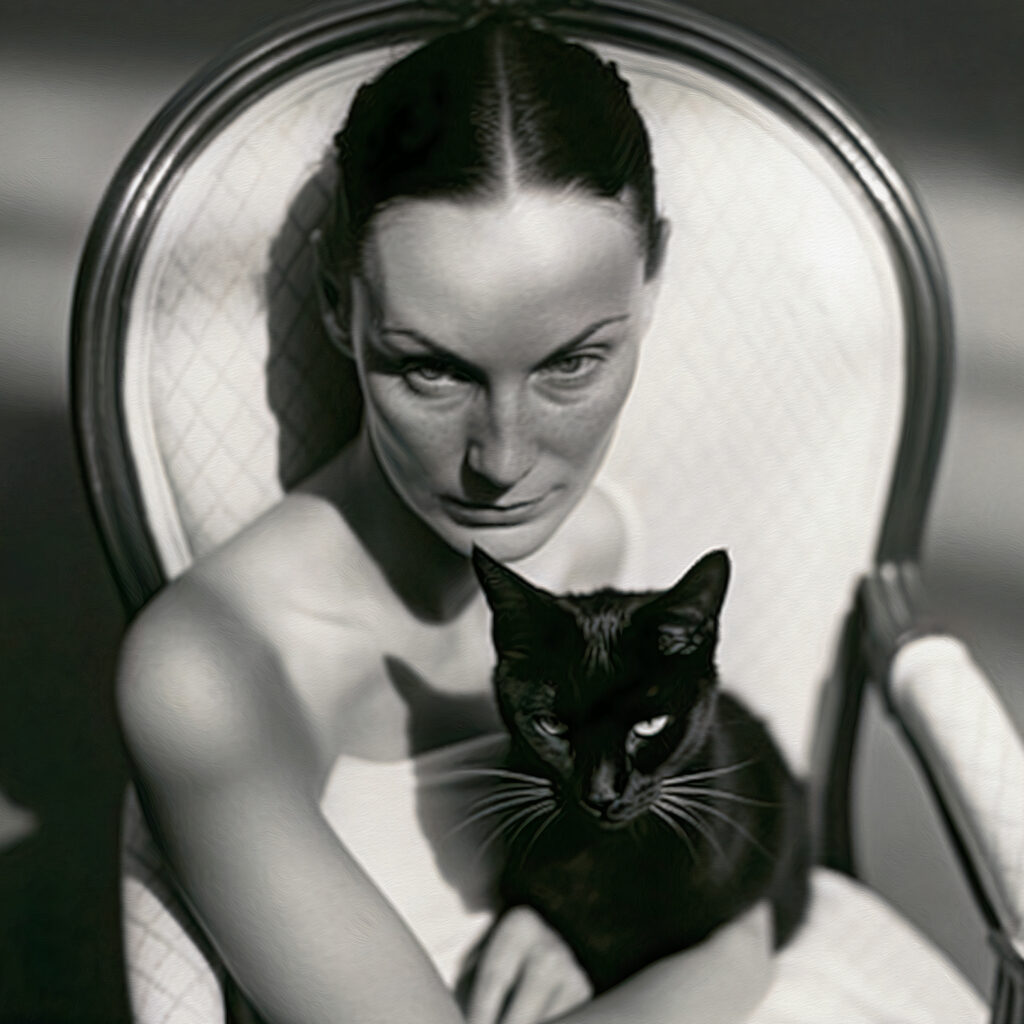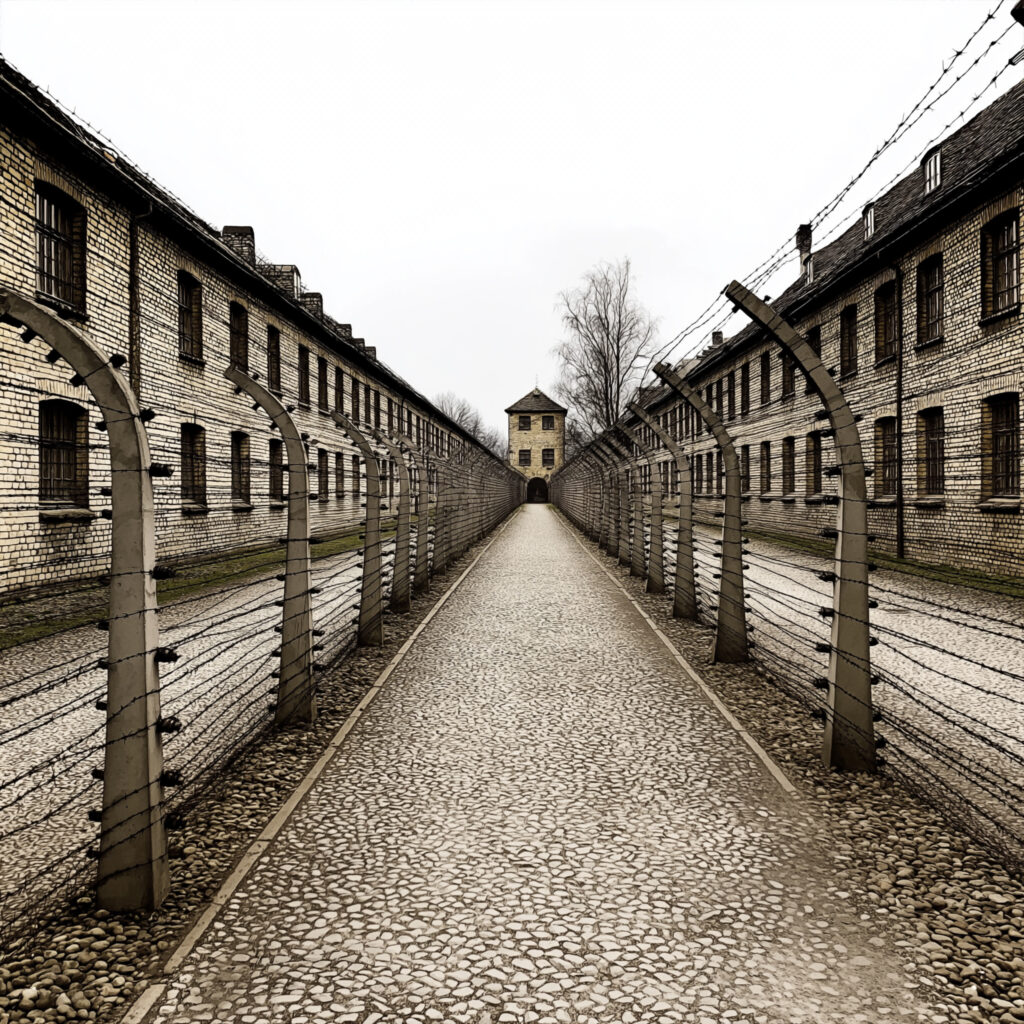Your cart is currently empty!
…because of the exceedingly great length of the war…
many had become hardened;
[while others] were softened because of their afflictions...
Alma 62:41

I remember purchasing the black-and-white photograph in a stall near Notre-Dame, only a few weeks after I arrived in Paris as a missionary in 1947. Faded, matted on thick grey cardstock, sold for a few francs. It showed l’Église Saint-Étienne-le-Vieux, left in ruins by the bombing raids during the battle of Caen inIts vaults had collapsed into ash and stone, and in the center stood a salvaged crucifix, suspended above the rubble by the fidèles. Christ hung still, arms outstretched, but his head was gone—obliterated, perhaps by shrapnel.
As I came to understand over time, that photograph captured not only the
destruction of France by the Nazis, but also the spiritual collapse that followed when divine protection was expected—but never came. What had once symbolized endurance now stood mute and spectral. The silence of heaven amid such devastation transformed many. The god once preached from pulpits of wood and marble—a god shaped by human longing, who could shield cities, halt bullets, preserve the innocent, a god who had promised safety—had failed. Belief fractured. The cross remained, but no longer commanded trust.
Notre-Dame itself stood untouched, its towers defiant above the Seine. But many who passed beneath them did so with hollow eyes, bearing invisible ruins.
I was told that when Paris was finally liberated, children ran in the streets with joy. But many of their parents did not smile. The war had spared their lives, but taken something quieter, deeper—the capacity to feel. Liberation had come, but something within them remained bound. The war was over, but the prison endured. For them, the devastation had not only destroyed buildings—but meanings. God, justice, memory—these too lay buried beneath the ruins.

In the last months of my mission in 1949, my companion and I spent several days knocking on doors in a vast concrete apartment block in Lagny-sur-Marne, just outside Paris. From the day we started, word quickly spread: the Americans were coming to convert the neighborhood. Doors slammed. Voices whispered. Rejection became routine.
Then, one door opened. Geneviève Delacroix invited us in.
She must have been in her early thirties then, born into the illusion of peace that followed the Great War. Tall for a Frenchwoman, pale, with fine bones and dark hair pulled back in a severe knot. She sat in an armchair with her black cat on her lap, which stared at us as she did: motionless, unblinking. Her beauty was precise and distant, like a still from an old film. I remember the light from the window crossing the dark living room, falling on her. She never smiled. She seldom interrupted our teaching. She simply regarded.
During the occupation, she later recounted, she had hidden and fed members of the French Resistance. At ten o’clock on an ordinary evening, she was arrested and sent to Auschwitz. There, she endured ignominy, disease, and the solitude of violence.
In the final days of the war, as the Soviet Red Army advanced from the east, the Nazis began evacuating the camp, forcing over 50,000 prisoners onto death marches in the dead of winter—desperate to erase the evidence of their crimes. Geneviève, too weak to walk, was left behind to die. That saved her life.
Days later, on January 27, 1945, the Soviets entered Auschwitz. They found her among the 7,000 who remained—emaciated, fevered, but alive. After liberation, she could not walk for nearly a year. She had to be taught to live again.
Only a few years had passed since that horror. And yet there she was—not
hardened. Not bitter. Just waiting. The only memory she had kept from the war was a photograph of one of the entries to Auschwitz, empty. The camp was never demolished. She kept the picture framed in her living room as a reminder she was one of the last prisoners to leave.
I know what the Americans have done for France, she told us, unbothered by her neighbors’ warnings. Twice, sometimes three times a week, we shared the message of the restored gospel. Within a few months, she chose to be baptized.
When the day of her baptism came, I stood as a witness near the font. Before I left her apartment that evening, I gave her a souvenir—my old family Bible. It had belonged to my Catalan grandfather, printed in Latin, a worn Vulgate. Inside it I had kept the photograph I had bought at the foot of Notre-Dame. She accepted it with reverence. Thank you, she said. Then I stepped into the elevator and she gently closed the door.
I left France not long after and never saw her again.

A decade passed, I returned to Paris—this time as a scientist. I had been invited to lecture at the Pasteur Institute on bacteriology. On Sunday, to see her, I visited the chapel where Geneviève had been baptized.
She had passed away years earlier, they told me.
I had thought of writing to her many times. But my constant studies and laboratory work kept me from it. Deep down, I knew I had buried myself in that routine to forget her.
She left something for you, in case you came back, said the branch president, an austere yet respectful man. He went to his office and returned with the framed photograph of Auschwitz. It was carefully wrapped. The corners were worn, the glass slightly dusted. Just as I remembered it—resting above her living room cabinet.
So that no one would see me cry, I stepped outside and walked the old streets again. July was burning and the roads were empty. I was grateful for the silence; it made the place feel intimate again.
As I walked, I wondered if she had ever imagined I would return. Or if that hope, too, had long ago folded away. Now, as I left France once more, I remembered the endless doors of those two years—the many refusals, and the few who embraced our message. Geneviève had been one of them. But somehow, unlike the others, she had been freed twice: from Auschwitz, and through grace.
When I finally reached my apartment in Manhattan, the air was stale with the scent of dust. Over the living room table lay my old family Bible—the Vulgate I had gifted to Geneviève after her baptism. With a sense of dread, I opened it. The space where the crucifix photograph had been was empty.
